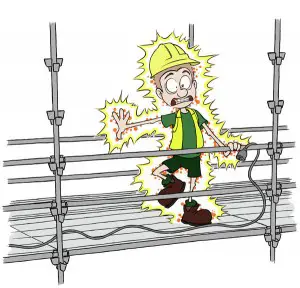In construction, scaffolding refers to a temporary structure that is used to support people or material while working on constructing or repairing buildings. Since the task of constructing or repairing buildings, especially high structures can be dangerous, scaffolding safety is paramount. With all the dangers surrounding scaffold usage, scaffolding safety should be of priority for the workers involved.

Different types of scaffolding are available dependent on their usage and the material used in their construction. You can read this post on types of Scaffolding to get details.
A look at some of the scaffolding types:
- Supported Scaffolding which is the most commonly used and is built from the base upwards. They are considered more low cost and appropriate in as far as scaffolding safety is concerned.
- Rolling Scaffolding which is similar to supported scaffolding but which makes use of castor style wheels as opposed to the stable base that is found in supported scaffolding.
- Suspended Scaffolding which is typically suspended from a roof or any other tall construct and is utilized in the event that a base construction is not possible or when there is a requirement to access upper levels. It is most commonly used by window cleaners on tall buildings although; it can also be utilized when repairs are needed at upper levels.
- Mobile Scaffolding which is of a semi-permanent status and requires taking apart and constructing again when moved to another location
- Aerial Lifts which are utilized in the event that workers need to access a number of levels in a bid to complete the construction.
Regardless of which scaffolding type is used, scaffolding safety should be the top most priority. As such scaffolding safety tips will go a long way in ensuring that the danger levels or utilizing scaffolds is kept to a minimum.
Watch this video on scaffolding safety:
A look at some of the tips to keep in mind in order to ensure scaffolding safety:
- When erecting the scaffold, ensure that you follow the manufacturer’s instructions.
- Ensure that persons meant to utilize the scaffolding are properly trained in order to ensure maximum scaffolding safety.

- Before actually getting on the scaffolding, ensure that it is safe. By this, you need to ensure that it is not leaning to one side, wobbling or otherwise having some kind of damage that may be disastrous.
- Avoid working under weather conditions that may be perceived as dangerous to scaffolding safety. Avoid utilizing the scaffold during stormy or windy weather conditions.
- For scaffolding safety, the load capacity should be taken into consideration. As such, ensure that the scaffold is strong enough to handle the load you are planning to utilize on it in order to avoid collapse or accidents.
- Be sure to check that the scaffold is properly secured in place.
- Inspection and maintenance of the scaffolding should be as regular as possible. Ideally, the best candidates to inspect and maintain the scaffold should be professional, competent and well trained.
- While on the scaffold, it is important that the appropriate personal protective equipment (PPE) is used in order for scaffolding safety. Appropriate PPE include non-slip protective footwear, head protection, and fall protection such as safety harnesses among others.


My dad always said that it’s better to be safe than sorry. It would be terrible if something bad were to happen while working on scaffolding. Hopefully, everyone is being safe while on these structures. I’m afraid of heights so I doubt I’ll ever be up on one of these.
Scaffolding safety is always be the first top we need to take care of, when scaffolding news catches everybody’s eyes, it always means that scaffolding collapse or injury happens, it is terrible when scaffolding fall in wholesale scale, be careful when scaffolding.